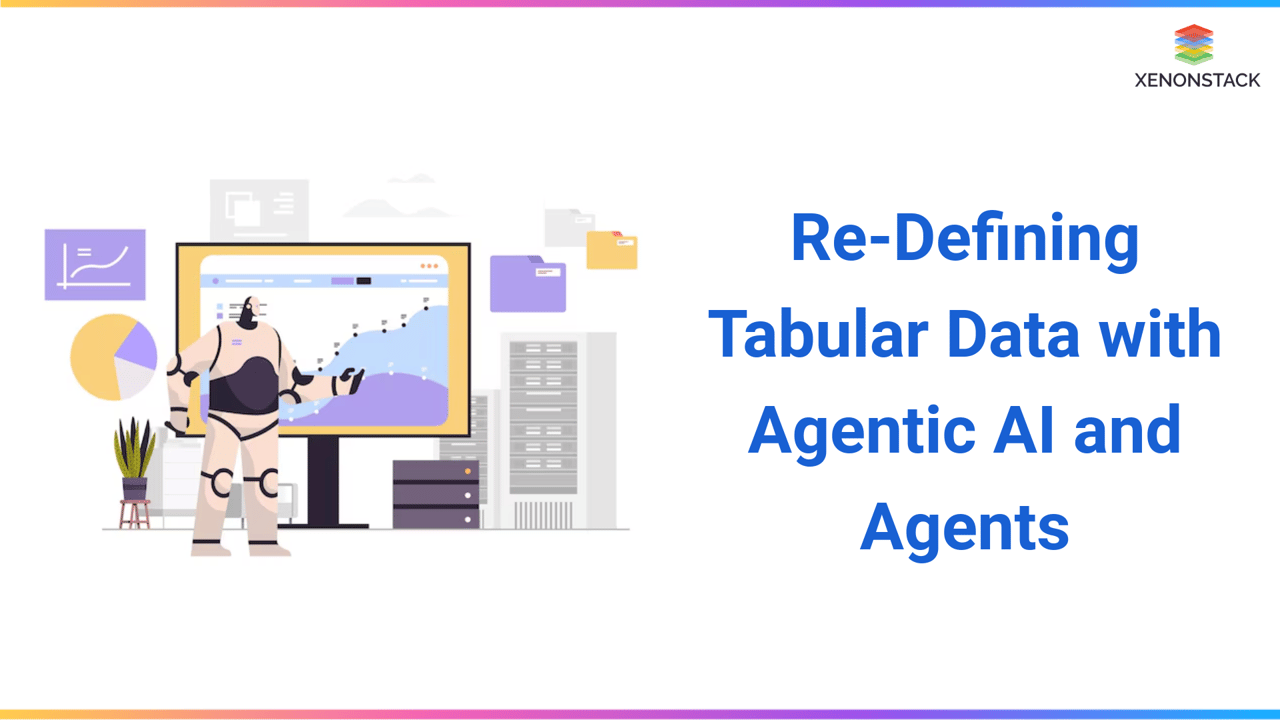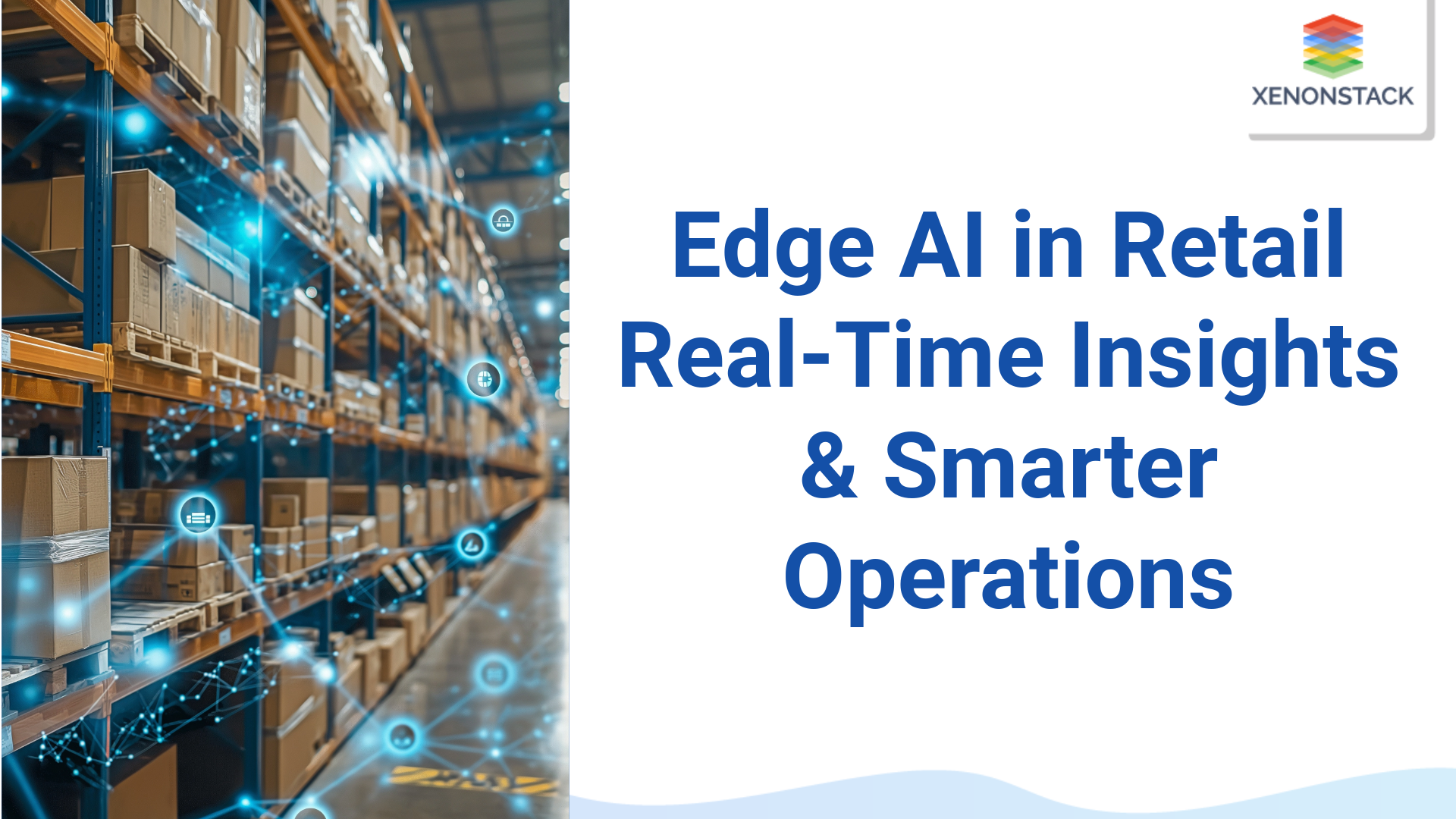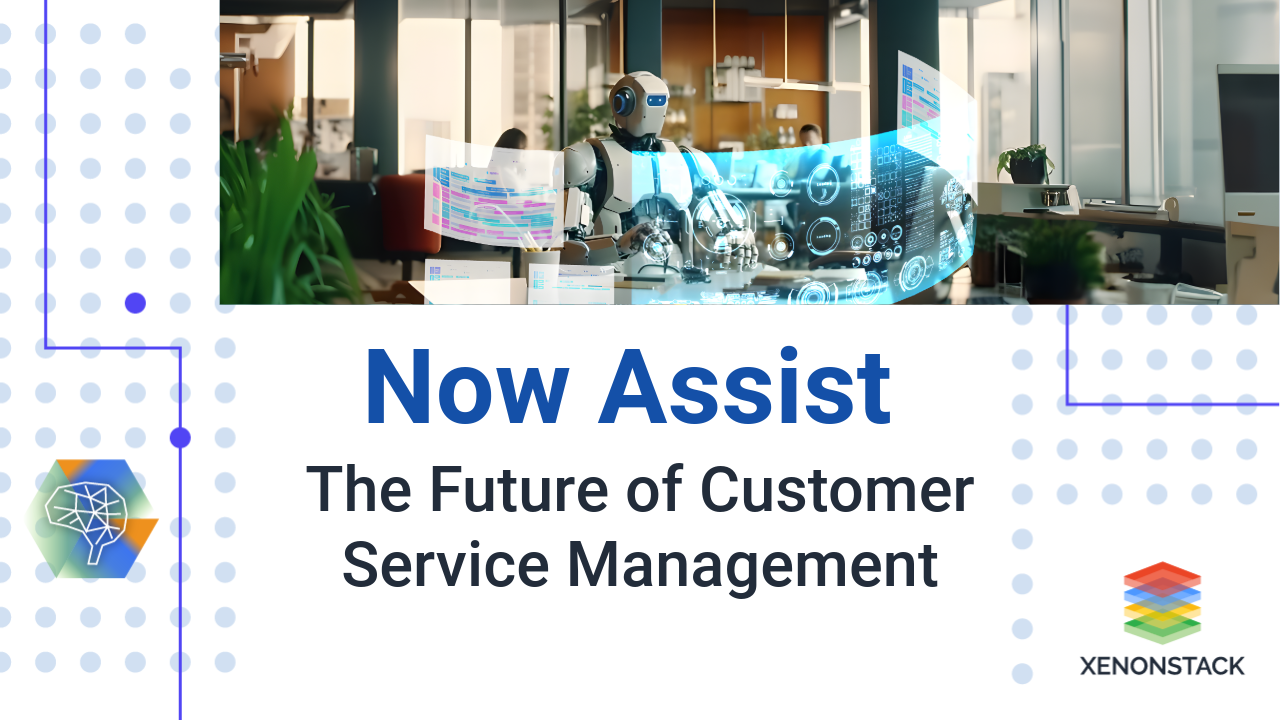
In the era of digital transformation, tabular data—structured data organized in rows and columns—remains foundational across industries. From financial records to healthcare databases, its ubiquity underscores its importance. However, traditional methods of managing and analyzing tabular data are increasingly challenged by modern datasets' volume, velocity, and variety. Enter Agentic AI: a paradigm shift that introduces autonomous agents capable of revolutionizing how we interact with and derive insights from tabular data.
The global data landscape is expanding at an unprecedented rate. According to IDC, the total amount of digital data created worldwide is expected to reach 175 zettabytes by 2025. A significant portion of this data is structured, residing in relational databases, spreadsheets, and data warehouses.
Understanding Tabular Data and Its Importance
Tabular data refers to structured data that is systematically arranged in rows and columns, much like what you see in a spreadsheet or relational database. Each column holds a specific attribute or variable (e.g., Name, Age, Salary), while each row represents a unique record or data entry. This format makes it easy to read, sort, filter, and analyze data using various tools like Excel, SQL, or data analysis libraries in Python (e.g., Pandas).
For example, a sales dataset may include columns such as Order ID, Customer Name, Product, Quantity, and Order Date. Each row would contain the details of an individual sales transaction. Tabular data is widely used across industries, including finance, healthcare, manufacturing, and retail, for decision-making, reporting, and predictive analytics. Its structured nature is ideal for feeding into machine learning models, enabling businesses to automate forecasting, anomaly detection, and personalized recommendations.
Key Concepts of Tabular Data
Tabular data serves as the foundation for most structured data systems, enabling organizations to store and analyze data efficiently. Understanding its core components is essential for appreciating its role in modern analytics.
Structured Format: Data is organized with clearly defined rows and columns, where each column has a specific datatype. This structure ensures consistency, validation, and easy interpretation.
These concepts form the backbone of operational and analytical systems in nearly every industry. However, the traditional ways of managing this data come with notable challenges.
Traditional Way of Handling Tabular Data
For decades, businesses have relied on conventional tools and methods to manage tabular data. While functional, these approaches often involve heavy manual intervention and are not built for agility.
-
Manual Data Cleaning: Cleaning involves fixing missing values, correcting errors, and removing duplicates. It’s repetitive and delays time-to-insight.
-
SQL-Based Queries: SQL remains a powerful tool for data manipulation, but it's technical and rigid. Changes in schema or business logic require rewriting queries.
-
Rule-Based Pipelines: ETL workflows follow static rules for transforming data, which break when inputs evolve. Maintaining these rules demands ongoing manual updates.
-
BI Tools: Tools like Tableau and Power BI are used for visualizing structured data. But these rely on periodic updates and rarely operate in real-time.
-
Statistical Models: Traditional statistical analysis requires cleaned, well-prepared data. These models don’t adapt well to changing patterns or data irregularities.
While these techniques have served well in the past, they now limit flexibility and speed—especially in fast-paced, data-driven environments.
Challenges in Traditional Tabular Data Processing
As data volume and complexity grow, traditional methods struggle to keep up. These challenges hinder scalability, reliability, and responsiveness.
-
Static Pipelines: Hardcoded ETL processes don’t adapt well to evolving schemas or new data sources. Even small changes can disrupt the entire workflow.
-
Human Dependency: Analysts must manually clean and validate data, leading to bottlenecks. This dependency slows down innovation and increases operational risk.
-
Scalability Bottlenecks: Legacy systems fail under high data loads or when connecting multiple sources. Scaling often requires expensive infrastructure upgrades.
-
Context Loss: Conventional tools miss implicit relationships or trends within the data. This results in shallow insights and missed opportunities.
-
Slow Decision Loops: Reports are generated post-event, reducing their impact. Businesses can't act fast on real-time changes or anomalies.
These limitations reveal the urgent need for intelligent, automated, and scalable approaches to tabular data management.
Impact on Customers Due to Traditional Approaches
Traditional data systems affect internal operations and have visible consequences for customers. These limitations ripple into the customer experience, trust, and satisfaction.
-
Delayed Insights: Manual workflows and static tools cause delays in reporting. Customers often face long wait times for data-driven responses.
-
Inaccurate Predictions: Outdated or poor-quality data skews forecasts and personalization, resulting in irrelevant suggestions or missed service expectations.
-
Poor Personalization: Without dynamic data pipelines, businesses can't adapt to individual needs in real-time, and customers receive generic and impersonal experiences.
-
Inefficiency: Manual processing leads to increased costs and resource waste, which affects service delivery and customer pricing.
-
Data Silos: Disconnected systems create fragmented customer views. This leads to inconsistent communication and decision-making.
Ultimately, these issues impact customer loyalty, reduce revenue opportunities, and create a competitive disadvantage in today’s fast-moving market.
Solution: AI Agents to Analyze Tabular Data at Various Levels
 Fig 1: Architecture Diagram of Agentic AI in Tabular Data
Fig 1: Architecture Diagram of Agentic AI in Tabular Data
Data Sources
-
CSV Files: Simple text-based files that organize data in a table format. These files are widely used due to their portability and ease of integration with many systems.
-
Database Systems: These include traditional relational databases (e.g., MySQL, PostgreSQL) or modern cloud-based data warehouses (e.g., Snowflake, BigQuery). These databases store large volumes of structured tabular data and allow for complex querying and transactional operations.
-
APIs: Application Programming Interfaces (APIs) allow external systems to feed tabular data into the system, typically in real-time or through scheduled pulls. For instance, APIs might provide customer data from a CRM or financial transaction data from an e-commerce platform.
-
Spreadsheets: Tools like Excel or Google Sheets that users often utilize for organizing and managing tabular data. These tools allow for manual entry and are often used for data that needs frequent updates or small-scale analysis.
By collecting data from these diverse sources, the system ensures that it can handle a wide variety of data formats and integrate data from multiple systems, providing a comprehensive view for analysis.
Master Orchestrator Agent
The Master Orchestrator Agent is the central control unit within this system. It plays a pivotal role in ensuring smooth coordination among the specialized agents and managing the flow of data from the sources to the final output. Key functions include:
-
Coordinating Agents: The orchestrator oversees and coordinates the sequence of tasks across specialized agents. It ensures that the data is cleaned, transformed, analyzed, visualized, and reported in the right order and that dependencies are respected.
-
Data Aggregation: It collects raw data from various sources (e.g., APIs, databases, files) and prepares it for processing by sending it to the relevant specialized agents. This helps to avoid bottlenecks and ensures that data is seamlessly integrated into the system.
-
Workflow Management: It manages the workflow logic, determining which agents should be invoked based on certain conditions or schedules. For example, if new data is received, the orchestrator triggers the Data Cleaning Agent, followed by the Data Transformation Agent, and so on.
Specialized Agents
These are individual, task-specific agents, each responsible for handling a unique aspect of data processing. They work autonomously but under the guidance of the Master Orchestrator Agent. Below are their roles:
Data Cleaning Agent
-
Purpose: This agent’s primary role is to prepare the raw data for further analysis by ensuring its accuracy and completeness.
-
Functionality:
-
Identifying Missing Values: The agent detects any gaps in the data (e.g., missing rows or columns) and fills in those gaps where possible, either by imputation or flagging the issue for review.
-
Anomaly Detection: It scans the dataset for inconsistencies, outliers, or errors in data that could skew analysis (e.g., invalid values, duplicates, or unrealistic outliers).
-
Reporting: Once the cleaning process is complete, the agent generates anomaly reports that are forwarded to relevant stakeholders or other agents to handle further processing.
-
Data Transformation Agent
-
Purpose: This agent is responsible for making the data ready for analysis by transforming it into a usable, standardized format.
-
Functionality:
-
Normalization: It ensures that data is consistent, converting values like dates and currency into standardized formats.
-
Categorization: It maps categorical data into numerical values, and sometimes even aggregates data from multiple columns or tables into one cohesive format.
-
Data Enrichment: In some cases, this agent might also enrich the data by combining it with external data sources (e.g., demographic data or market data) to provide a richer dataset for analysis.
-
Data Analysis Agent
-
Purpose: The Data Analysis Agent is where the magic happens. This agent analyzes the transformed data to uncover insights and build predictive models.
-
Functionality:
-
Statistical Analysis: It applies various statistical methods to detect patterns, trends, correlations, or any other insights in the data that might be relevant.
-
Predictive Modeling: This agent uses machine learning or other statistical techniques to create models based on historical data, such as demand forecasting, customer behavior predictions, or risk analysis.
-
Insight Generation: The agent not only builds models but also interprets them to generate actionable insights that can guide decision-making.
-
Visualization Agent
-
Purpose: This agent converts the analyzed data into visual formats that are easy to understand and interpret.
-
Functionality:
-
Dashboards: It creates interactive dashboards where key metrics and trends are displayed, enabling stakeholders to easily track performance and make decisions.
-
Charts and Graphs: The agent generates charts (e.g., bar graphs, line charts, pie charts) that provide visual clarity on the insights derived from the data.
-
Customization: The agent can create tailored views for different stakeholders, highlighting the most relevant data for various teams or departments.
-
Reporting Agent
-
Purpose: This agent generates and distributes reports based on the analysis and visualizations created by other agents.
-
Functionality:
-
Report Generation: It automatically compiles insights and visualizations into standardized report formats (e.g., PDF, PowerPoint, Word) for easy sharing.
-
Distribution: Once the report is generated, the agent sends it to the relevant stakeholders (executives, managers, etc.) through email, shared drives, or integrated systems like CRMs or project management tools.
-
Scheduling: The Reporting Agent can be set to generate and distribute reports at scheduled intervals (e.g., daily, weekly, or monthly) for ongoing monitoring.
-
Final Output
The culmination of all these agents’ efforts is the final output, which consists of:
-
Tabular Data Insights: These are the actionable insights derived from analyzing the cleaned and transformed tabular data. They might include trend forecasts, recommendations for operational improvements, or predictions for future market behavior.
-
Decision Support: The insights and reports generated by the system provide decision-makers with the data they need to take informed actions, whether it’s adjusting marketing strategies, managing inventory, or optimizing customer service.
By automating and streamlining the entire data pipeline, from data ingestion through to final reporting, the system reduces manual intervention, ensures faster and more accurate insights, and empowers organizations to make data-driven decisions at scale.
Prominent Technologies in the Tabular Data Space
Over the years, several technologies have emerged to optimize tabular data handling—from storage to analysis. These solutions offer performance, flexibility, and automation in varying degrees.
-
Relational Databases (MySQL, PostgreSQL, Oracle): These traditional systems offer strong ACID compliance and efficient querying. They are the backbone of enterprise systems but often lack flexibility in handling unstructured or streaming data.
-
Cloud Data Warehouses (Snowflake, BigQuery, Redshift): Designed for scalability and performance, these platforms handle petabyte-scale data and support modern analytics workloads. However, they rely on predefined schemas and batch-processing models.
-
ETL/ELT Platforms (Apache NiFi, Talend, dbt): These tools automate data movement and transformation. They reduce manual effort but follow rule-based logic, which can become brittle with evolving data sources.
-
BI and Visualization Tools (Power BI, Tableau, Looker): These tools help stakeholders explore and visualize tabular data. However, they require upstream data to be clean, complete, and aggregated appropriately, limiting real-time responsiveness.
-
AutoML and ML Platforms (DataRobot, H2O.ai): These platforms can automate model building on tabular datasets. However, they often treat data in isolation and lack contextual reasoning or cross-table learning.
While these technologies offer substantial value, they are often siloed, non-adaptive, and require extensive human configuration and oversight.
Benefits of Using Agentic AI for Tabular Data
Adopting Agentic AI for tabular data processing offers tangible returns on investment across various business aspects. Here’s how organizations can see measurable benefits:
By implementing Agentic AI for tabular data, organizations achieve operational efficiency and cost savings and drive growth, improve customer experiences, and make better data-driven decisions—all of which contribute to a strong return on investment.
Faster Time to Market: Reduces time spent on manual data handling, resulting in a 20-40% decrease in time-to-market for data-driven initiatives.
Enhanced Operational Efficiency: Businesses see operational cost savings by reducing labour costs associated with data management, potentially lowering overhead by 15-30%.
Increased Revenue: Companies have reported up to a 25% increase in sales and a 10-20% improvement in customer retention after deploying AI-powered recommendations and insights.
Reduced Risk and Errors: This reduces error-related costs and penalties, saving 10-15% in operational losses due to inaccurate data or compliance issues.
Cost Savings from Automation: Businesses can reduce staffing costs by up to 30%, achieving long-term cost savings as processes are streamlined.
Scalability and Future Growth: This allows for growth with minimal incremental cost, ensuring that businesses can scale up operations without substantial new investment in infrastructure.
Improved Customer Experience: Companies can see up to a 15-25% improvement in customer lifetime value (CLV) and a 10-20% increase in customer satisfaction scores.
Successful Implementations of AI Agents in Tabular Data Use Cases
 Fig 1: Use Cases of Agentic AI in Tabular Data
Fig 1: Use Cases of Agentic AI in Tabular Data
1. Financial Industry: Fraud Detection
-
Use Case: AI agents are implemented to analyze transaction data in real-time to detect fraudulent activities.
-
How It Works: AI models analyze tabular data such as transaction amount, location, time, and frequency. Specialized agents identify unusual patterns that indicate potential fraud.
-
Outcome: Real-time alerts and automated decisions help financial institutions mitigate fraud risks, improving security and reducing false positives.
2. E-commerce: Personalized Recommendations
-
Use Case: AI agents process customer purchase history, browsing behaviour, and demographic data to provide personalized product recommendations.
-
How It Works: The data analysis agent uses machine learning algorithms to analyze user data and predict what products customers are most likely to purchase next.
-
Outcome: Increased conversion rates, better customer satisfaction, and higher sales due to personalized product suggestions.
3. Healthcare: Patient Outcome Prediction
-
Use Case: AI agents are used in healthcare to analyze patient data (e.g., age, medical history, test results) to predict outcomes like disease progression.
-
How It Works: The data analysis agent uses historical patient data to build predictive models that forecast future health events, such as the likelihood of readmission or the progression of chronic conditions.
-
Outcome: Early interventions, optimized treatment plans, and improved patient care by predicting critical health events before they occur.
4. Supply Chain: Inventory Management
-
Use Case: AI agents analyze tabular data related to inventory levels, sales forecasts, and lead times to optimize stock levels across warehouses.
-
How It Works: Data cleaning and transformation agents prepare data from various sources, and AI models predict demand fluctuations, optimizing order quantities and timing.
-
Outcome: Reduced stockouts and overstock, enhanced supply chain efficiency, and cost savings through better inventory management.
5. Retail: Sales Forecasting
-
Use Case: AI agents help retailers forecast future sales based on historical sales data, seasonality, promotions, and economic factors.
-
How It Works: The data analysis agent analyzes sales trends, market conditions, and external factors, generating predictive models for future sales.
-
Outcome: More accurate sales forecasts, improved stock planning, and optimized pricing strategies, resulting in increased revenue and reduced waste.
6. Marketing: Customer Segmentation
-
Use Case: AI agents analyze customer behaviour data (e.g., demographics, purchase history, website interactions) to segment customers into meaningful groups for targeted marketing.
-
How It Works: The data analysis agent uses clustering algorithms to identify customer segments with similar behaviours and preferences.
-
Outcome: Improved targeting for marketing campaigns, higher engagement rates, and more effective advertising spending by delivering personalized content to the right audience.
These examples showcase how AI agents can optimize tabular data handling, automate decision-making processes, and provide actionable insights across various industries.
How AI Agents Supersede Other Technologies
AI agents are redefining how tabular data is interpreted, processed, and acted upon. Unlike rule-based systems, they are autonomous, context-aware, and capable of continuous learning.
-
Adaptive Learning
Agents continuously learn from new data and feedback, adjusting workflows and cleaning logic and insights without manual reprogramming. -
Contextual Reasoning
Instead of treating data statically, agents understand interdependencies between columns, tables, and data sources—leading to deeper insights and proactive action. -
Multi-Level Collaboration
Agents can coordinate across departments or data layers—finance, operations, marketing—breaking silos and enabling end-to-end visibility. -
Autonomous Data Pipelines
From ingestion to transformation and analysis, agents automate the whole lifecycle. They identify anomalies, fill gaps, and flag real-time quality issues. -
Real-Time Decisioning
AI agents integrate with dashboards and operational systems, enabling proactive recommendations and instant action based on live data changes.
These capabilities help organizations move from descriptive and diagnostic analytics to predictive and prescriptive intelligence, redefining efficiency and agility.
Next Steps with AI Agents
Talk to our experts about re-defining tabular data management with Agentic AI and Agents, transforming data analysis and decision-making processes by leveraging intelligent automation, improving insights, and optimizing workflows across industries and departments.




